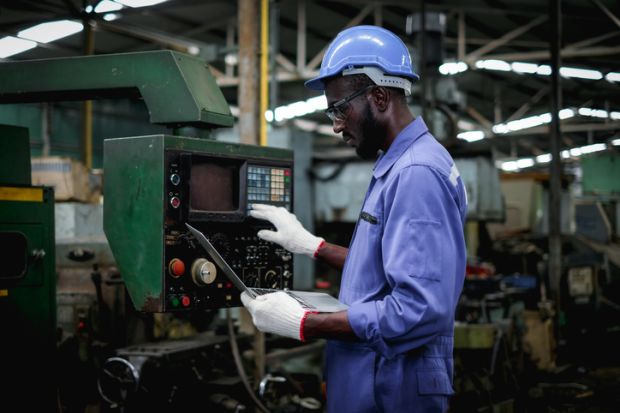The Biden administration is promoting the idea of career-focused high schools with a pitch likely to surprise many prestige-focused parents: they provide a clearer pathway to post-secondary education.
That record of post-secondary success usually means career-oriented training at the level of two-year programmes and certificates, administration officials acknowledged. But academic-vocational boundaries are growing less clear, and political leaders in both parties have been trying to convince families that job-centred components promise better lifelong outcomes for an increasing number of students.
“There is more we can do, to get the word out, that there are a lot of quality options out there,” said Jen Mishory, chief of staff in the Office of Career, Technical and Adult Education, at the US Department of Education.
In one such effort, the administration has been making career and technical education a chief focus in distributing the $122 billion (£91 billion) allocated for schools’ pandemic recovery, from the $1.9 trillion economic stimulus bill approved early last year by Congress.
In another, Joe Biden used this week’s annual State of the Union Address to push companies to rethink their ideas of job preparation. In particular, Mr Biden promised in the speech to Congress to use the government’s purchasing power to encourage hiring “based on skills, not just their degrees”.
The administration’s data includes a study it conducted in Nebraska and South Dakota showing that students who took a concentration of career and technical education courses in high school were 7 percentage points more likely, than those who did not, to graduate from high school on time and 10 percentage points more likely to then enrol in post-secondary education.
Other studies in North Carolina and New York City also tied technology-themed career training in high schools to higher rates of post-secondary enrolment, as well as fewer absences, and better test scores and graduation records.
Such numbers aren’t completely escaping students, parents or companies. Nearly 4 million US high school students – about a quarter of the nation’s total – were enrolled in a career or technical education programme in the 2018-19 academic year, marking a sharp rise from about 3 million just four years earlier. And at the post-secondary level, major corporations such as Amazon and Walmart have found value in paying for employee tuition, usually for job-related skills.
But that’s not necessarily translating into stronger post-secondary enrolment in career-specific programmes, due to factors beyond awareness or even interest. The nation’s system of two-year community colleges has lost some 15 per cent of its enrolment over the two years of the pandemic, and the problem is widely attributed to lower-wealth families with financial and personal challenges that leave them unable to afford schooling.
Differences in resources have long played a role in student choices at various points along the US educational pipeline, Ms Mishory acknowledged, including the problem of low-income communities being unable to give their school students the long-term educational guidance they need.
With US public school budgets constrained and imbalanced by the nation’s system of local funding for school education, she said, the available solutions included creating easier pathways for dual enrolment – the practice of students taking college-level courses while still in high school.
Mr Biden, in his State of the Union Address, also promised to direct more federal funding for job-centred training within low-income and minority communities, and at historically black and other minority-serving colleges and universities.
Yet the US president also hopes to promote non-college options, such as registered apprenticeships and labour management partnership training programmes.




